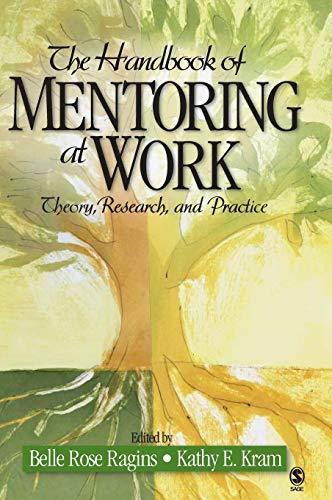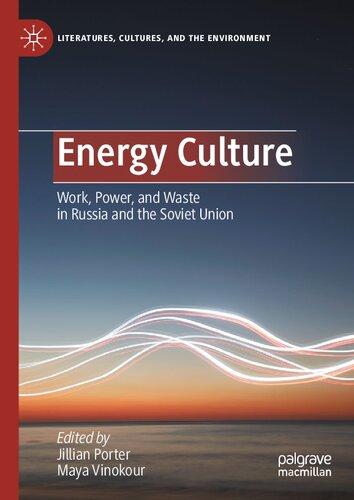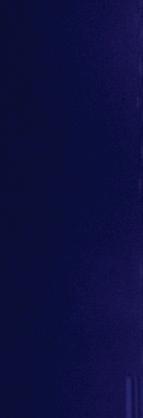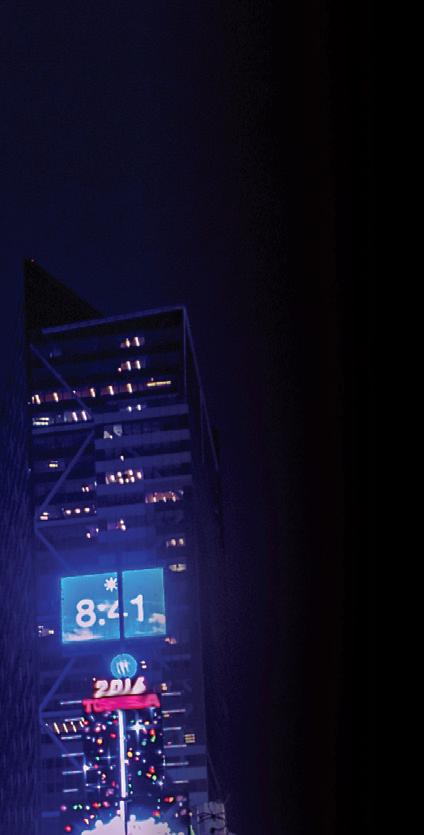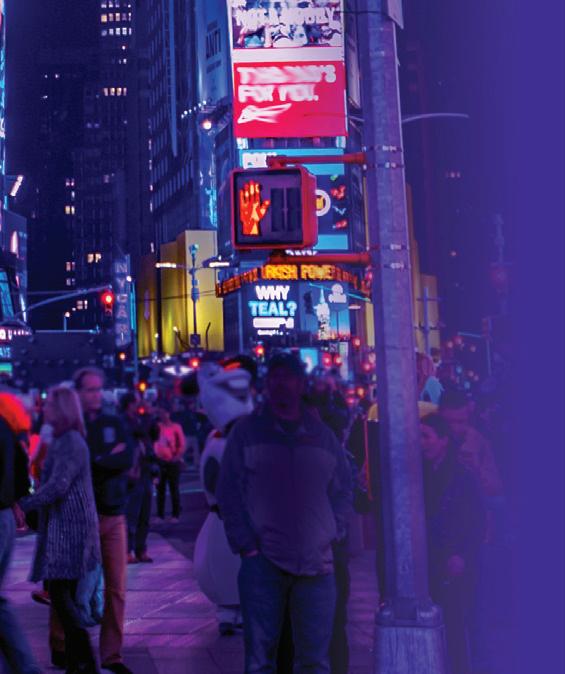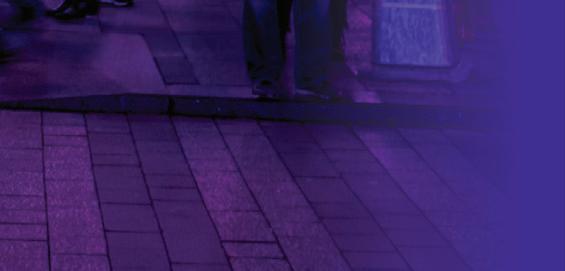THE WORLDS OF JOHN WICK
THE YEAR’S WORK AT THE CONTINENTAL HOTEL
EDITED
BY
CAITLIN G. WATT & STEPHEN WATT
indiana university press
This book is a publication of Indiana University Press Office of Scholarly Publishing
Herman B Wells Library 350 1320 East 10th Street
Bloomington, Indiana 47405 USA
iupress.org
© 2022 by Indiana University Press
All rights reserved
No part of this book may be reproduced or utilized in any form or by any means, electronic or mechanical, including photocopying and recording, or by any information storage and retrieval system, without permission in writing from the publisher. The paper used in this publication meets the minimum requirements of the American National Standard for Information Sciences—Permanence of Paper for Printed Library Materials, ANSI Z39.48–1992.
Manufactured in the United States of America
First printing 2022
Cataloging information is available from the Library of Congress.
ISBN 978-0-253-06240-6 (hardback)
ISBN 978-0-253-06241-3 (paperback)
ISBN 978-0-253-06242-0 (ebook)
· A cknowledgments · ix
· I ntroduction The Worlds of John Wick
C aitlin G. Watt & Stephen Watt · 1
· Part I J ohn Wick and Action Cinema
1 R ed Circle of Revenge: Anatomy of the Fight Sequence in John Wick
L isa Coulthard & Lindsay Steenberg · 41
2 H idden in Plain Sight: Stunt-Craft Work in John Wick and the Networked Worlds of 87Eleven Action Design
L auren Steimer · 63
3 K illing in Equanimity: Theorizing John Wick ’s Action Aesthetics Wayne Wong · 84 · Part II The Economies and Phenomenology of the Wickverse 4 The Continental Abyss: John Wick versus the Frankfurt School
S kip Willman · 121 5 Bitcoin, Shitcoin, Wickcoin: The Hidden Phenomenology of John Wick
A aron Jaffe · 146
· Part III John Wick: Other Cultural Forms and Genres
6 Fortune Favors the Bold: The State of Games and Play in the John Wick Films
E dward P. Dallis-Comentale · 169
7 “ The One You Sent to Kill the Boogeyman”: Folklore and Identity Deconstruction in the John Wick Universe
C aitlin G. Watt · 194
8 Captain Dead Wick: Grief and the Monstrous in the John Wick and Deadpool Films
M ary Nestor · 216
· Part IV John Wick ’s Matrix: Space and Time
9 C lassical Orders, Modernist Revisions, Fantastical Expansions: Reading the Architecture of the John Wick Franchise
A ndrew Battaglia & Marleen Newman · 241
10 O ut of Time and Going Sideways: John Wick, Time Traveler
C harles M. Tung · 265
11 John Wick’s Blank Cosmopolitanism and the Global Spatiality of the Wickverse
M i Jeong Lee · 290
· Part V Gender and the Body in John Wick
12 John Wick’s Multiply Signifying Dogs
K aralyn Kendall-Morwick · 317
13 M asculinity, Isolation, and Revenge: John Wick’s Liminal Body
Ow en R. Horton · 339
14 Professionalism and Gender Performance in the John Wickverse
Vivi an Nun Halloran · 358
15 Style and the Sacrificial Body in John Wick 3
S tephen Watt · 378
· B ibliography · 401
· I ndex · 431
We are grateful to Gary Dunham and Indiana University Press both for supporting this project in its earliest stages and for introducing us to our editor, Allison Chaplin. We also want to thank two anonymous readers for their enthusiastic support and wise suggestions about how to make this a better book, and we thank Chris Holmlund, Ed DallisComentale, and Aaron Jaffe, with whom we shared ideas about this project at various steps in its evolution. We also want to acknowledge Mi Jeong Lee’s assistance throughout this project and thank Ingrid Kastle of the Albertina Museum in Vienna.
Many of the essays in this book began as keynote lectures or presentations at a meeting on the Indiana University Bloomington campus some two months before anyone had ever heard of COVID-19. This meeting, “The Worlds of John Wick,” was made possible by the generosity of several people and academic units: the Office of the Vice Provost for Research; the College of Arts and Sciences and Associate Dean Paul Gutjahr; the College of Arts and Sciences Humanities Institute and its director, Jonathan Elmer; the Media School and Dean Jim Shanahan; Dean Peg Faimon of the Sidney and Lois Eskenazi School of Art, Architecture + Design; and the Department of English. We want to convey special thanks to Rachel Stoeltje and Jamie Thomas of the Moving Image Archive at the Herman B Wells Library, who graciously agreed to cohost this event. And thanks, too, to Douglas Case and Owen Horton
x Acknowledgments of the English department for helping organize the event (and, in Doug’s case, paying the bills too!).
Many of our colleagues and friends supported the meeting and participated in it, too many to count. They include Ann C. Hall; Erik Bohman; Mary Borgo Ton; Jack Raglin and his graduate students in kinesiology, one of whom shared his experiences as a stuntman on the television series Vikings; Deb Christiansen, Mary Embry, and Kate Rowold from the Eskenazi School’s Department of Fashion Design; Scot Barnett, Patty Ingham, DeWitt Kilgore, and Derek DiMatteo from the English department; Jon Vickers from IU Cinema; Jeff Stuckey from the Office of Advancement; and many more film scholars and Wick fans, some of whom traveled a great distance to attend the event. This includes our roster of stellar contributors, who made the task of organizing and editing this volume a pleasure. We reserve our final note of appreciation for Nonie and Brendan Watt, whose support makes everything we do possible, and for our extended family of uncles and cousins, who may even be bigger fans of John Wick than we are.
THE WORLDS OF JOHN WICK
INTRODUCTION
THE WORLDS OF JOHN WICK
Caitlin G. Watt & Stephen Watt
One of the most successful action film franchises of the young twentyfirst century—in many ways, surprisingly so—is John Wick . One measure of this success is monetary, of course, as each of the first three films in the series earned nearly twice as much as its predecessor: John Wick (2014), made for some $20 million, returned a box office of $86 million; John Wick: Chapter 2 (2017), budgeted at $40 million, grossed over $171.5 million worldwide; and John Wick: Chapter 3—Parabellum (2019), produced for $75 million, took in $327.3 million worldwide.1 To be sure, this last amount hardly approaches the earnings of Aladdin ($1.05 billion) and Avengers: Endgame, which garnered the almost grotesque sum of $2.798 billion. Still, as Scott Mendelson reported in June 2019, “Aladdin and John Wick: Chapter 3 are both holding like champs partially because they are offering big-screen thrills of the sort you can’t find anywhere else in theaters or on TV.” 2 His thesis was corroborated by the announcement of plans for John Wick: Chapter 4 scarcely two weeks after fans crowded theaters to see John Wick 3 upon its release in May. As Brooks Barnes put it in the New York Times, the Wick franchise “has grown remarkably more powerful with each installment,” adding that this “kind of audience expansion—extremely rare—is a dream result for Lionsgate, which has been struggling to turn around its movie operation, in part because Netflix has started to crank out the type of lowand mid-budget films in which Lionsgate has long specialized.”3
This “dream result” was not without its challenges, however. As its makers concede, the film’s plot, in which a retired, widowed hitman seeks revenge for the theft of his car and the killing of his puppy, is neither particularly complex nor original, nor does it align neatly with contemporary action cinema. “The success of John Wick as a franchise shouldn’t be underplayed,” Richard Newby advises, “because it was never a sure thing. In an action-movie landscape where superhero movies and sci-fi epics have dominated, the John Wick franchise has become a welcome surprise hit.” For Newby, John Wick seemed to come “out of nowhere,” or, as French critic Simon Riaux quipped, it was made “practically on the sly” (“quasiment en catimini ”).4 As Newby implies, the franchise does not tantalize audiences with imminent planetary cataclysm requiring the interventions of Marvel-style heroes; no Wookies, Klingons, or Transformers populate Wick’s universe; and the Wick films are neither spinoffs from nor remakes of earlier franchises. In the history of action/vigilante films from, say, the five Death Wish films (1974–94) starring Charles Bronson and continuing through the installments of Taken (2008–2014), John Wick stands as an impressive—and, in many ways, unique—achievement.
Comparisons to Taken and Death Wish illuminate and, at the same time, complicate two other dimensions of John Wick ’s ascent: its connections to the “aging action star comeback” subgenre and its success as a franchise in an era in which other film series have faltered. As numerous commentators have observed, John Wick emerges not from nowhere but in part from the popularity of franchises like Taken , The Expendables, and The Equalizer, a subgenre of action dominated by such stalwarts as Liam Neeson, Sylvester Stallone, and Denzel Washington. Tom Philip indirectly alludes to these films when gushing about Keanu Reeves’s performance in John Wick 3 while also emphasizing his age: “What
2The Worlds of John Wick
a joy it is to see the 54-year-old Reeves grabbing this exhausting role with both hands.”5 But since the actors we just mentioned celebrated their fifty-fourth birthdays some (or many) years ago, labeling John Wick as a vehicle for an “aging action star” seems inaccurate. This fact plus Reeves’s uncanny youthfulness—in Mixed-Race Superman (2019), Will Harris marvels that, his “neat beard” aside, Reeves’s face “hasn’t changed much over the years”—attenuate the comparison further.6
Chronicling Reeves’s rise to stardom in the 1980s and 1990s, Michael DeAngelis underscores his impersonation of characters “at least a decade younger” than he was at the time.7 In short, there is little evidence in any of the Wick films of Reeves’s decrepitude, although as Harris quips, “in spite of his superheroic gift for kicking ass,” he is “nonetheless constantly getting his ass kicked.”8
Nor can the notion of the comeback quite explain the franchise’s success—instead, it serves to frame it within a lens that figures Keanu Reeves as mirroring his character’s return to action. Cat McCarrey’s review explicitly equates actor and character: describing a conversation in which John asserts that he is “back” in Assassin World, McCarrey remarks, “It’s true for Wick and Reeves. After the box office failure of his passion project ‘47 Ronin,’ Reeves needed a comeback.” 9 This last comment reveals the fragility of the parallel: unlike John Wick, Keanu Reeves never retired, but his films between The Matrix and John Wick tend to get erased from discussions of his comeback or, rather, regarded as irrelevant.10 As Travis M. Andrews notes, “There was no big controversy. . . . Just a string of forgettable movies that slowly faded his star. Until now.”11 Searching for explanations of John Wick ’s success through the lens of the aging action star comeback thus seems fruitless, as it is the film itself, as well as its own narrative of return, that casts Reeves’s career between The Matrix and John Wick into shadow and renders his
performance a comeback. Neither can the success of John Wick , comeback or not, explain the exponential growth of the franchise. For about the time John Wick 3 was released, as Mendelson points out, two films originating in highly durable attractions—Men in Black: International and The Secret Life of Pets 2—“struggled” or “outright tanked” at the box office.12 As the former earned over $182 million during its first ten days, “outright tanked” seems more than ungenerous; more illuminating from a financial perspective are the fates of two remakes of Charles Bronson’s star vehicles from the 1970s, The Mechanic in 2011 and Death Wish in 2018. The Mechanic , starring Jason Statham, earned over $76 million on a $40-million budget, a sum respectable enough to merit a sequel. Although The Mechanic: Resurrection (2016) was even more successful, netting $125.8 million, reviews were decidedly mixed (it scored a 38 on Metacritic, compared with John Wick 2’s 75). And Death Wish, with Bruce Willis playing Bronson’s vigilante Paul Kersey, really did tank, earning only $49.6 million.
So, what happened? In his column in Forbes the day after reporting on their box office numbers, Mendelson returned to Avengers: Endgame , Aladdin, and John Wick 3 to explain why this troika “towered” over the competition. His conclusion? All three not only gave audiences what they wanted to see but also “offered something new,” not a “downgrade” or “weirdly regressive” facsimile of an original.13 Even more effusive with his superlatives, Rolling Stone’s David Fear lauded John Wick as “ the seriously batshit crazy, go-for-broke, open-world action-flick franchise of the 21st century.” Its “artisanal touch . . . transformed a B-movie series into A-plus outrageousness” and “quality pandemonium.”14 Much of this “A-plus outrageousness”—what audiences wanted to see—was action, and the John Wick films don’t disappoint on this score. But not just any action. As director Chad Stahelski emphasized to a reviewer,
Worlds of John Wick
insofar as possible the “tone of the action” must match the “tone of the film.”15 Unwilling to countenance this violence, whatever its tone, some detractors denigrated the films’ narratives as little more than action sequences sutured together to display Wick’s talents at killing adversaries—or “trashing” cars.16 The excesses of these sequences (specifically, their body counts) at times elicited sarcasm even among critics who appreciated their execution. Riaux in L’Ecran Large , for example, wryly called attention to Wick’s motivation for enacting such retribution: “If the theft of a car and the murder of a puppy justify, in your eyes, massacring the equivalent of the population of Luxembourg . . . then you’re ready for John Wick” (our translation).17 One person’s enjoyment of “A-plus outrageousness,” it would seem, might be another’s incredulity about attachments to classic cars or emotional investments in puppies. Yet even Jeannette Catsoulis, who deemed John Wick a “fluke” and denigrated the franchise as “dumb as dirt,” admitted that the fight choreography in John Wick 3 is “staggeringly accomplished.”18 Critics in America and around the world agreed that the action sequences were extraordinary, masterfully paced, and “magnificently choreographed” (“magnifiquement chorégraphiées”).19 Peter Travers in Rolling Stone applauded “the bristling beauty of the fight scenes . . . with cinematographer Dan Laustsen and editor Evan Schiff performing well beyond the call of duty.” 20 Reviewing the film for the BBC, Mark Kermode employed the seldom-used adjective balletic to describe the precision, even elegance, of the fight choreography. He also pointed to the “showdown” in John Wick 3 between Wick and Zero (Mark Dacascos) in the all-glassand-mirror room in the Continental as striking a delicate balance of violence and dark humor, recalling the precedent of Harold Lloyd and Charlie Chaplin.21 So, while Michael Phillips complained that the film “grows wearying in the second half,” Kermode clearly did not find it
so.22 Nor did Travers, who claimed that “instead of feeling exhausted when director Chad Stahelski calls a halt at 130 minutes, you’re panting for Chapter 4.” 23
Mark Kermode and Simon Mayo, Kermode’s colleague at the BBC, attribute much of the breathless excitement to Keanu Reeves’s performance.24 And they are hardly alone. Bilge Ebiri probably put Reeves’s assumption of the title character best when writing about the first film in the franchise: “With any other actor in the role, the relentless revenge flick John Wick could have been just another variation on the Neesonian man-with-special-set-of-skills-kills-everybody genre. But with an actor as ethereal and ageless as Keanu Reeves in the lead, it becomes something else—more abstract and mythic.”25 Ebiri’s remarks not only highlight the appeal of Reeves’s portrayal but also hint at the ways in which John Wick , as we have suggested, transposes the conventional keys of the action film into new aesthetic registers.
Although John Wick may begin as a “relentless revenge flick”— Thomas Périllon’s review compares Reeves’s performance to Tom Cruise’s in Jack Reacher (2012) and Denzel Washington’s in The Equalizer (2014)—Ebiri positions it within a different context.26 Detecting hints of “arty action” in the “defiant unreality” of the film, he identifies traces of Luc Besson’s La Femme Nikita (1990) and Léon: The Professional (1994), which, he asserts, were built “not on anything real, but on our collective cinematic dreams of genre.” In his comparison of John Wick ’s violence to that of Antoine Fuqua’s The Equalizer, in which the “brutality” of Robert McCall’s foes “increased exponentially,” Ebiri commends the narrative of the former as “cleaner: It gives us a visceral reason for the bloodshed, but then it plays it cool. Its ambitions are aesthetic.” 27 Terms like aesthetic and mythic hint at John Wick ’s contributions to action cinema, new dimensions implied by reviewers’ use of such descriptors as “majesty” and “elegant simplicity.” 28 The essays that follow offer
Worlds of John Wick
multi- and interdisciplinary perspectives of these and other qualities, all the while demonstrating how the Wick films are far more than enervated comeback vehicles or formulaic revenge dramas.
The most compelling evidence for this claim is the films’ distinctive world-building, a project that reflects the seriousness with which Stahelski and his collaborators regard action cinema as a cinematic genre. The films’ meticulously choreographed action; what Ebiri terms their highly varnished “aesthetic”; Wick’s complex and intriguing backstory; the superb performances of Reeves, Ian McShane, Common, Laurence Fishburne, Anjelica Huston, Lance Reddick, Halle Berry, and others— all contribute to the nuance, even elegance, of a fictive universe that may very well define the films’ greatest achievement. Stahelski is very clear about the primacy of world-building to the Wick franchise: “We just wanted to isolate and show you a hidden world, and believe in the mythology.” 29 And, as he underscored in an interview before the release of John Wick 3, world-building is for him a careful business.30 It is therefore hardly accidental that Mendelson applauds the first film’s “robust and creative world-building that puts the would-be ‘Let’s make a Marvel-style expanded universe’ copycats to shame.”31 Or that Asia Kate Dillon, the Adjudicator in John Wick 3, finds that the most “exciting thing about the second film and [ John Wick 3] is that we go deeper and deeper into the John Wick World.” “Everything in the movie,” Dillon notes, has “a deeper meaning” linked to religion, art, and a multitude of other cultural forms.32 And this meaning grows just as the smaller fictive worlds constitutive of this “Wickverse” expand with each new installment, setting the franchise apart from less successful peers. For Peter Sobczynski, who commended John Wick as a film “of wit, style, and vision,” John Wick 3 is “a work of pop cinema so blissfully, albeit brutally, entertaining that you come out of it feeling even more resentful of its multiplex neighbors for not making a similar effort.”33
We agree. Yet at times the painting, ballet, and myriad cultural allusions in John Wick’s world are so seductive and dizzying that decoding them is not a simple task. In an uncertain reading of John Wick 2, Erik Kain characterizes the “entire setup” of the film as “almost medieval. Knights and barons, kings and castles. Betrayal and revenge.” Then, apparently changing his mind, he revises his analogy: “It’s all very Shakespearean and florid and sort of beautiful and garish all at once.”34 Kain’s response is telling, as the films create a multifoliate world that fascinates, even dazzles, but may also befuddle. Still, such rich heterogeneity does not promote chaos. As Nelson Goodman posits in Ways of Worldmaking (1978), “Worldmaking as we know it always starts from worlds already on hand,” but a “willingness to welcome all worlds builds none.”35 A fictive universe is thus a purposeful, not promiscuous, aggregation of worlds, and that of John Wick proves no exception.
The Worlds and Storyworlds of John Wick
Eric Hayot’s riff in On Literary Worlds (2012) on a compact sentence in Martin Heidegger’s “The Origin of the Work of Art” (1950) is electric with implications, some of them potentially unsettling.36 This evocative sentence—“World worlds”—might invite confusion, for instance, about the title of this volume, The Worlds of John Wick, considering Goodman’s thesis that a world originates in other worlds. The volume knob turned up on his phrasing, Hayot’s unpacking of Heidegger is more than virtuosic: “The intimacy Heidegger proposes between the work and the world relies . . . on the flamboyantly deployed quasi-tautology that binds world together as subject and predicate of its own tiny sentence. World worlds.”37 In its more common use as a noun, worlds denotes the extant materials that compose a work’s diegetic space; as a predicate in this “quasi-tautology,” the word connotes a self-propagative qua
Worlds of John Wick
parthenogenetic capacity—that is to say, whatever shards of borrowed material it might contain, a world “worlds” itself. Moreover, in John Wick , not only is the viewers’ world “set off by a sharp and categorical boundary from the represented world in the text,” but their “real” world is also distanced within the films themselves.38 This is why Wick does not kill police officers or travel to Rome in John Wick 2 to assassinate the pope. He must not impact that world, and the films generally observe this proscription. So, early in John Wick , Jimmy the policeman (Thomas Sadoski), investigating a noise complaint, rings Wick’s doorbell just seconds after he has dispatched the last of Viggo Tarasov’s (Michael Nyqvist) hitmen. The front door is open just enough for Jimmy to notice a body strewn across the floor, leading him to ask Wick if he is working again. Satisfied by the answer, “No, just sortin’ some stuff out,” Jimmy promises to “leave [him] be” and says goodnight. The everyday realities of crime procedurals and the attendant generic expectations they create—the calling of police backup and ambulances, the arrival of a forensics team—end at the threshold of Wick’s world.39 The boundaries of this world are not always impermeable, but they are usually observed. It may be useful to enlarge this idea of the “real” world, distinguishing it from the different categories of “worlds” that comprise the Wickverse. On one level, this realm is populated by its cast and crew, with the skills, ideas, and influences they bring to the films’ production; its borders are delimited by the resources required to produce a feature-length film. In announcing the production of John Wick 2 , Jason Constantine, Lionsgate’s president of acquisitions and coproductions, said, “With such tremendous fan and critical support for John Wick, we knew there was still so much more of this story to tell.” 40 Implicit in this remark is a kind of causality: there is more story to tell precisely because the film has been supported by fans and critics. Its artistic potential as a fictional world also depends on its success as a product for consumption.
In addition, such factors as the actors’ willingness to participate in the franchise, the studios’ decisions about release dates and theaters to exhibit the film, and the impact of COVID-19 on production schedules all operate in the world outside the films but have shaped the world inside them.41 This world is also informed by its creators’ immersion as stunt performers in the world of action cinema; as Lauren Steimer underscores later in this volume, the real-world professional connections and work experiences of Stahelski and David Leitch’s production crew shape the films’ action and characterization, situating them within an archive that includes The Matrix , The Bourne Identity, and the world of international martial arts cinema. As Goodman posits, the “so-called possible worlds of fiction lie within actual worlds”; likewise, actual worlds inform aspects of what narratologist Marie-Laure Ryan defines as the storyworld.42
In her consideration of this term, Ryan considers various definitions of world , fictional and philosophical: an author’s world, for example, may refer to “the social and historical setting typical of the author’s works . . . and the author’s general ideas and philosophy of life,” which is to say, it may encompass the external aspects of a film’s world discussed above. By contrast, a storyworld is separated by several ontological degrees from the world inhabited by writers, actors, audiences, and film producers: “If a storyworld is anybody’s world, it is the world of the characters.”43 The storyworld, too, might be divided into a number of smaller domains comprising a story universe: around the central shared world of the characters (what Ryan calls the “Text Actual World,” an analogy with the “actual world” of possible-worlds theory) orbit a number of subworlds existing in the lives or minds of each character. These “satellite worlds include knowledge-worlds, obligation-worlds, wishworlds, pretend worlds, and so on.” 44 By this calculus, the worlds of the Wickverse are not limited to the “real world” of police and civilians
and the “underworld” of assassins and gangsters but also include the worlds of John Wick the assassin and John Wick the mourning husband, the inner worlds of the many other characters, the worlds ruled over by the Continental, the Bowery King, the High Table, and so on. The term Wickverse, then, which appears in fan spaces such as Reddit, Twitter hashtags, and Fandom.com as well as in critical reviews, gestures toward the expansiveness and complexity enabled by the shared “universes” of fictional worlds.
Ryan’s “principle of minimal departure,” which assesses the distance between a fictional storyworld and the world inhabited by its audiences, is especially helpful in exploring this universe. This principle, moreover, enables us to reconcile what Ebiri calls the franchise’s “defiant unreality” and the paradoxical “authenticity” so many reviewers valorize when discussing its stunt work. The principle of minimal departure presupposes that fictional worlds are ontologically complete: “To the reader’s imagination, undecidable propositions are a matter of missing information, not ontological deficiency.” 45 This is to say that if the authors of a text make no remarks about, for example, how gravity works in the text’s storyworld, its audiences will assume that gravity works for its characters in much the same way it does in the real world. The world of John Wick , however, both does and does not conform to our assumptions about how the real world works, at times deliberately contrasting moments of authenticity with the unreal nature of action cinema and, at others, straining our suspension of disbelief in its construction of a complex web of assassins.
An initial sign that the John Wick storyworld overlaps with our own is the mapping of its locations onto such cities as New York, Rome, and Casablanca (though, as Mi Jeong Lee argues later in this volume, sharp distinctions exist between this apparent cosmopolitan gesture and the conditions that govern real-life global travel). In an illustration of the
ways in which fictional worlds are perpetually in conversations with real ones, the authenticity of the Wickverse’s global reach is enhanced by a cast of international performers. If casting the Russian brothers Abram and Viggo Tarasov with Swedish actors Michael Nyqvist and Peter Stormare is not accurate or realistic—native Russian speakers critiqued John Wick ’s Russian-language dialogue—the films’ casting nonetheless suggests that the movies are supposed to take place in a world that, like ours, has such places as Belarus, Italy, and Morocco and that this world has points of contact with the world of international action cinema.46 The producers’ own immersion in this world means that the Wickverse is populated by such figures as Chinese actor and stunt performer Tiger Hu Chen, star of Reeves’s 2013 Man of Tai Chi and with whom Stahelski and Leitch worked on The Matrix movies, and Indonesian actors and martial artists Yayan Ruhian and Cecep Arif Rahman, whose performances in The Raid 2 (2014) led Stahelski to recruit them for John Wick 3. 47
In addition to these gestures toward a global landscape based on a real-world map, John Wick foregrounds details, often omitted in action films, that link fictional characters to the laws governing human bodies and objects in our world: physical activity and recovery from wounds are exhausting, guns eventually run out of bullets, dead bodies and blood will not magically vanish unless and until someone cleans them up. In his commentary on the John Wick Blu-Ray, Stahelski remarks on the erasure of such realities from most action films: “If you think about it, [in] every action movie you always see . . . the hero leaves a wake of dead bodies, and I guess no one ever cleans it up!” 48 The work of Charlie (David Patrick Kelly) and his employees in John Wick , rolling dead henchmen up in plastic sheeting and squeegeeing blood from John’s windows, underlines the consequences of John’s profession: it produces corpses. In case we were tempted to forget this, Charlie’s return to clean
up after Ms. Perkins’s (Adrianne Palicki) execution reminds us once again that real-world violence produces material results.
In other respects, however, the John Wick franchise indicates that its world is not ours. As Jimmy’s willingness to overlook evidence of homicide implies, the films take place in a world in which familiar political, legal, and economic components of a realistic social superstructure have been replaced by hierarchies of criminal organizations and guilds of assassins. In John Wick 2 , John and Cassian (Common) exchange a volley of gunfire through a crowd, who ignore this gunfight as if it is an everyday occurrence. Perhaps it is, in a world in which everyone from street musicians to sushi chefs to pedestrians pushing baby carriages might be disguised assassins. It also, however, marks a departure from what a viewer constructing the world from real-world experience might expect, a moment when what we thought was a secret and arcane underworld is revealed to have exceeded its borders.
If the physical laws that limit human potential operate as normal in the John Wick universe, in other ways the filmmakers eschew realism in favor of a more stylized alternate reality. As Charles Tung’s essay in this volume explains, the storyworld of the franchise seems to take place outside of a predictable and mimetic present, instead mingling antique computers with classic cars with carrier pigeons in a mélange of retro references. Even the action sequences, praised for their rawness or authenticity, are stylized in a way that, as Lisa Coulthard and Lindsay Steenberg delineate in chapter 1, invites audiences to read fastpaced, highly choreographed violence as a source of aesthetic pleasure rather than as an index of authentic brutality. For viewers hoping to fill in gaps in the storyworld of John Wick , in accordance with the principle of minimal departure, the viewing experience can present a disorienting tension between unexpected moments of realism (Stahelski comments on the value of “just seeing a guy clean up after a party, wake up,
If the implausibility, stylization, and occasional parodic moments of John Wick ’s storyworld distance audiences from emotional engagement or narrative immersion, they in no way impede its “worldness” as a construct or “mental representation” that is “logically consistent, large enough to stimulate the imagination, and experienced as complete.”50
The storyworld’s ability to stimulate a viewer’s imagination, in fact, brings it into contact with other worlds: the nondiegetic webs of allusion and influence that connect parts of the fictional world, for example, and the world of fan consumption. This latter world is not entirely congruent with the economic system of film production, as Jared Gardner’s analysis of the convergence of comic books and films in the twenty-first century reveals. That is to say, the kinds of affective investments that fans of comics and John Wick make do not always work “in neat consort with the efficiencies and demands of the consumer marketplace,” as deeper engagement with the medium does not always motivate financial investment in, say, Funko Pop figurines (though of course you can also buy Funko Pop figurines of John Wick and comic book characters).51
Fan contributions thus expand the worlds of John Wick to include fanfiction, memes, art, and attentive commentary on filmic details. Like comic books, in other words, the Wick films have created an audience of “active agents who were inclined to become producers themselves,” and in our mappings of the worlds of John Wick , we have benefited from the networks of fans who have scrutinized the numbers and methods of kills in the movies, derived principles of the assassin economy, and identified the franchise’s numerous cultural and cinematic allusions.
Such allusions, visible in the casting, set design, props, costuming, choreography, and cinematography, help create another universe
John Wick and do some of the more mundane human side of things that you don’t ever see our action heroes do nowadays”) and unpredictable points of ostentatious unreality.49
of worlds in which John Wick and its sequels are situated, requiring for its comprehensibility both the fictional storyworld on-screen and the active reading of audiences. The notion of “twofoldness,” coined by Richard Wollheim to describe “our apprehension, at once, of both the depicted object and the marked surface, . . . the recognitional and configurational aspects of seeing-in,” captures the paradoxical phenomenon of perceiving both the fictional world depicted and the web of aesthetic cues and references that imbue this world with additional meanings.52 As Stahelski describes, these references and influences include Sergio Leone, Akira Kurosawa, Jackie Chan, and Buster Keaton; to these figures and the films and genres associated with them, we might add video games, comic books, folklore, epic poetry, Renaissance art, and Greco-Roman mythology.53 The “twofoldness” of this cinematic world, or universe, fills in lacunae in the occasionally sparse dialogue to reveal new aspects of characters or scenes and deepen our engagement in the “worldness” of the franchise. And, as we shall outline, several general principles guide its creation.
John Wick and Ways of Worlding
Theses like Eric Hayot’s on the construction and ontology of worlds illuminate methods of worlding, one of which involves time, as Hayot unexpectedly discovered when consulting the Oxford English Dictionary to better understand the etymology of world . There, he found uses of the word that pertain more to time than to geography or space, leading him to speculate, reasonably enough, that anyone “accustomed to thinking of ‘world’ as having only spatial implications” would be surprised.54 One scholar who wouldn’t be is Pheng Cheah, who, in What Is a World? On Postcolonial Literature as World Literature (2016), juxtaposes the “hetero-temporality of precolonial oral traditions” with
the normative force of imperial time and a conception of the world as a “spatial category” that “can be divided into zones of quantitatively measurable time.”55 Indeed, a “world only is and we are only worldly beings if there is already time.”56 Worlding, it seems, is thus not at base a “cartographical process that epistemologically constructs the world by means of discursive representations but a process of temporalization.”57
Even if we wanted to quibble about the privilege that Hayot and Cheang accord time in world-building (and we don’t) and were inclined to rebut the contention that the capitalist world-system relies on “Northern- and Eurocentric regimes of temporal measurement” (and we can’t) there is little denying the ways in which time is related to both power and world-building in John Wick . 58 This is particularly true of that part of the narrative that spans the final sequence of John Wick 2 through the opening scenes of John Wick 3. The final sequence of John Wick 2 begins at dusk with an injured and bloodied Wick hobbling down the steps of the Bethesda Terrace in Central Park to meet Winston (Ian McShane). Their conversation quickly turns to his punishment for “conducting business” on Company grounds: no access to services, excommunication, and, eventually, the forfeiture of his life. After Wick asks why he isn’t dead already, Winston responds, “Because I deemed it not to be.”
Then, after advising Wick, “You have one hour—I can’t delay it any longer,” he hands him a marker that he might need “down the road,” after which Wick warns Winston that he will kill anyone who pursues him.
As Wick leaves, Winston phones the Continental Switchboard to make the “excommunicado” official, to stipulate the one-hour grace period, and to have the contract on Wick circulated. The opening scene of John Wick 3 begins minutes later—well, actually and somewhat inexplicably, over an hour later, as Charles Tung explains—after Wick has exited the park and is preparing for the onslaught to come.
Winston’s admonition that he “can’t delay it any longer” could be regarded as an indication of his own constraints, something like “I can’t give you more time because the High Table would then turn on me.” But this scene and earlier ones demonstrate Winston’s wielding of monarchical power in his world, the Continental, a power over his dominion analogous to that the Bowery King (Laurence Fishburne) defiantly outlines to the Adjudicator in John Wick 3. Winston exercises his dominion throughout the films: he approves the Continental’s coinage and compliments the artisan who produced it; he excommunicates wrongdoers, as he does with Wick; and he determines punishments for transgressions, as he does in John Wick with Ms. Perkins. As ruler of his domain, he can assert his prerogative to do what he pleases, including his refusal to revoke Wick’s membership when Santino D’Antonio (Riccardo Scamarcio) demands it, reminding Santino that “this kingdom is mine and mine alone.” More relevant to worlding and worlds as temporal phenomena, he can determine the time when a contract can be enforced, much as the Adjudicator from the High Table gives the Bowery King seven days to settle his affairs before he is forced to “abdicate” his “throne.” But in the closing scene of John Wick 2 , Winston can do even more than this: he can stop time. With a nod of his head, a crowd strolling past Wick and Winston stops, as if frozen in place. When Winston nods again, the passersby resume walking as if nothing has happened. The effect is clear: his power extends beyond the walls of the Continental, and the Continental extends beyond the walls of hotels. It even extends beyond space; in his kingdom, Winston controls time.
Of course, space is involved as well. And, in constructing it—its dimensions, architecture, and decoration—Stahelski relies on both conventional and unconventional representational means, often in subtle ways. One concerns a kind of institutional gigantism and its intimation



